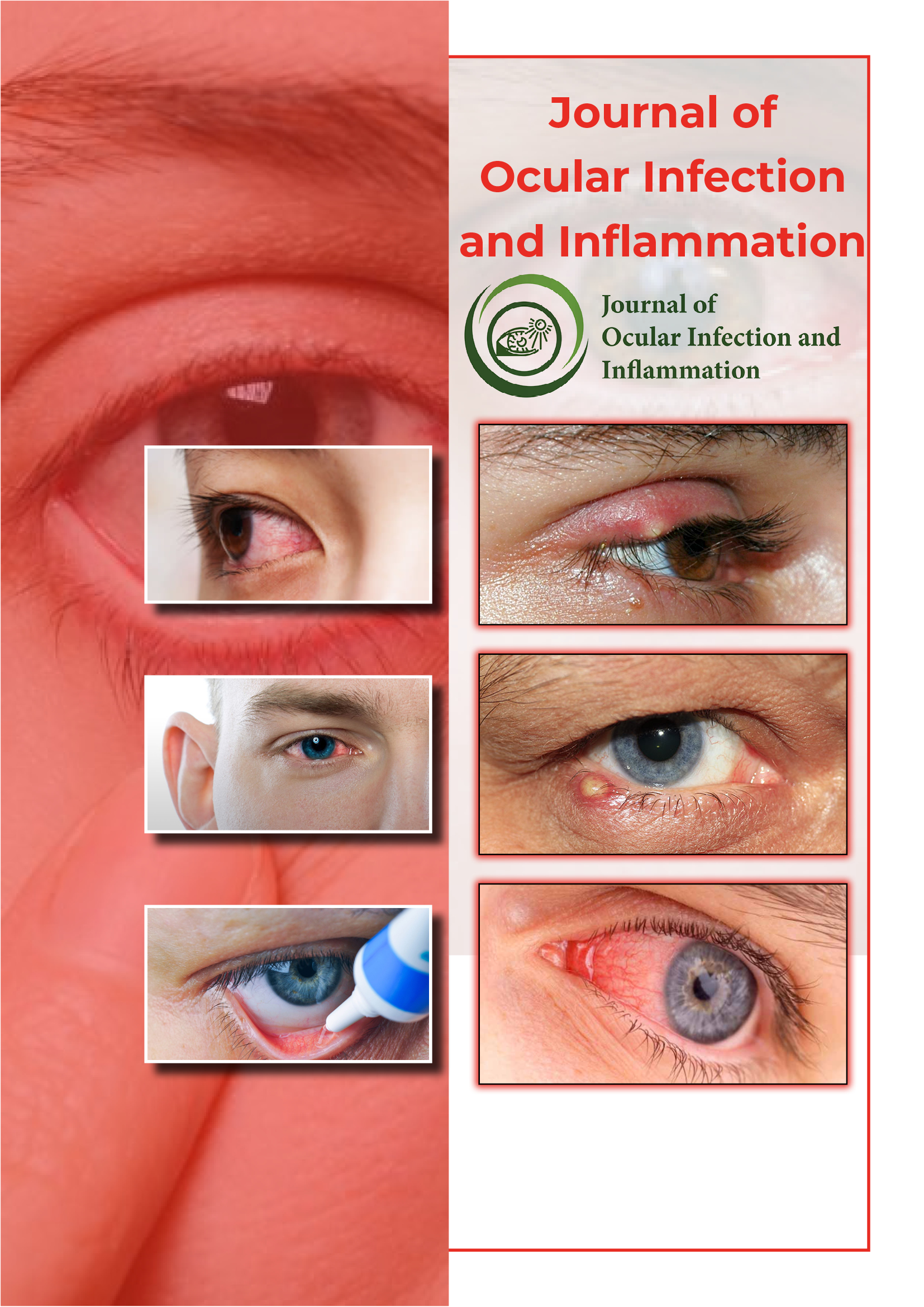Useful Links
Share This Page
Journal Flyer

Open Access Journals
- Agri and Aquaculture
- Biochemistry
- Bioinformatics & Systems Biology
- Business & Management
- Chemistry
- Clinical Sciences
- Engineering
- Food & Nutrition
- General Science
- Genetics & Molecular Biology
- Immunology & Microbiology
- Medical Sciences
- Neuroscience & Psychology
- Nursing & Health Care
- Pharmaceutical Sciences
Commentry - (2024) Volume 5, Issue 1
Visionary Health: Strategies for Preventing Eye Infections with Contact Lens Use
Xin Yu*Received: 26-Feb-2024, Manuscript No. JOII-24-25619; Editor assigned: 28-Feb-2024, Pre QC No. JOII-24-25619 (PQ); Reviewed: 13-Mar-2024, QC No. JOII-24-25619; Revised: 20-Mar-2024, Manuscript No. JOII-24-25619 (R); Published: 27-Mar-2024, DOI: 10.35248/JOII.24.05.123
Description
Millions of people's perspective on the world has been transformed by contact lenses, providing freedom from the limitations of glasses. However, this convenience also carries the risk of potential eye infections. These infections can range from mild irritation to severe complications, sometimes leading to permanent vision loss. In this commentary, we aim to explore the causes, risks, and preventive measures associated with eye infections from contact lenses.
Exploring the dynamics of eye infections
Eye infections related to contact lenses can be caused by various microorganisms, including bacteria, viruses, fungi, and amoebae. These pathogens advance in the warm, moist environment created by wearing contact lenses, particularly if proper hygiene practices are not followed. Common infections include microbial keratitis, conjunctivitis, and Giant Papillary Conjunctivitis (GPC).
Factors contributing to infections
Several factors contribute to the increased risk of eye infections among contact lens users. Poor hygiene practices, such as failing to wash hands before handling lenses or storing them improperly, create opportunities for pathogens to expand. Extended wear, sleeping in lenses, and swimming while wearing contacts also heighten the risk of infection. Additionally, wearing lenses beyond their recommended replacement schedule can balance ocular health.
Consequences of eye infections
The consequences of eye infections can vary widely depending on the severity and the type of pathogen involved. Mild infections may cause redness, discomfort, and increased sensitivity to light, while severe cases can lead to corneal ulcers, scarring, and even vision loss. Prompt diagnosis and treatment are vital to prevent complications and preserve vision.
Preventive measures
Preventing eye infections begins with adopting good hygiene practices. Contact lens users should always wash their hands thoroughly with soap and water before handling lenses. Additionally, lenses should be cleaned and disinfected as directed by an eye care professional, and stored in a clean case with fresh solution. It's essential to replace lenses according to the prescribed schedule and avoid wearing them while swimming or sleeping. Regular eye exams are also important for monitoring ocular health and detecting any early signs of infection.
Educating contact lens users
One of the most effective ways to reduce the incidence of eye infections is through education. Eye care professionals play a vital role in educating contact lens users about proper hygiene practices, lens care practices, and the significance of following prescribed wearing schedules. Patients should be informed about the signs and symptoms of eye infections and encouraged to seek prompt medical attention if they experience any discomfort or changes in vision.
The role of contact lens manufacturers
Contact lens manufacturers also have a responsibility to prioritize safety and quality in their products. This includes designing lenses with materials that minimize the risk of microbial observance and developing effective cleaning and disinfection solutions. Clear and concise instructions for use should be provided to users, along with warnings about potential risks associated with improper lens care.
Regulatory oversight
Regulatory agencies play a vital role in ensuring the safety and efficacy of contact lenses and lens care products. They establish guidelines for manufacturing standards, labeling requirements, and product testing to protect consumers from injury. However, continued caution is necessary to address emerging issues and developing threats to ocular health.
In conclusion, contact lenses provide certain benefits in terms of vision correction and convenience. They also carry essential risks, particularly concerning eye infections. By understanding the causes, risks, and preventive measures associated with these infections, contact lens users can take preventive steps to protect their ocular health. Through education, responsible lens care practices, and ongoing oversight, we can work together to minimize the incidence of eye infections and ensure that contact lens wear remains a safe and viable option for vision correction.
Citation: Yu X (2024) Visionary Health: Strategies for Preventing Eye Infections with Contact Lens Use. J Ocul Infec Inflamm. 05:123.
Copyright: © 2024 Yu X. This is an open-access article distributed under the terms of the Creative Commons Attribution License, which permits unrestricted use, distribution, and reproduction in any medium, provided the original author and source are credited.

